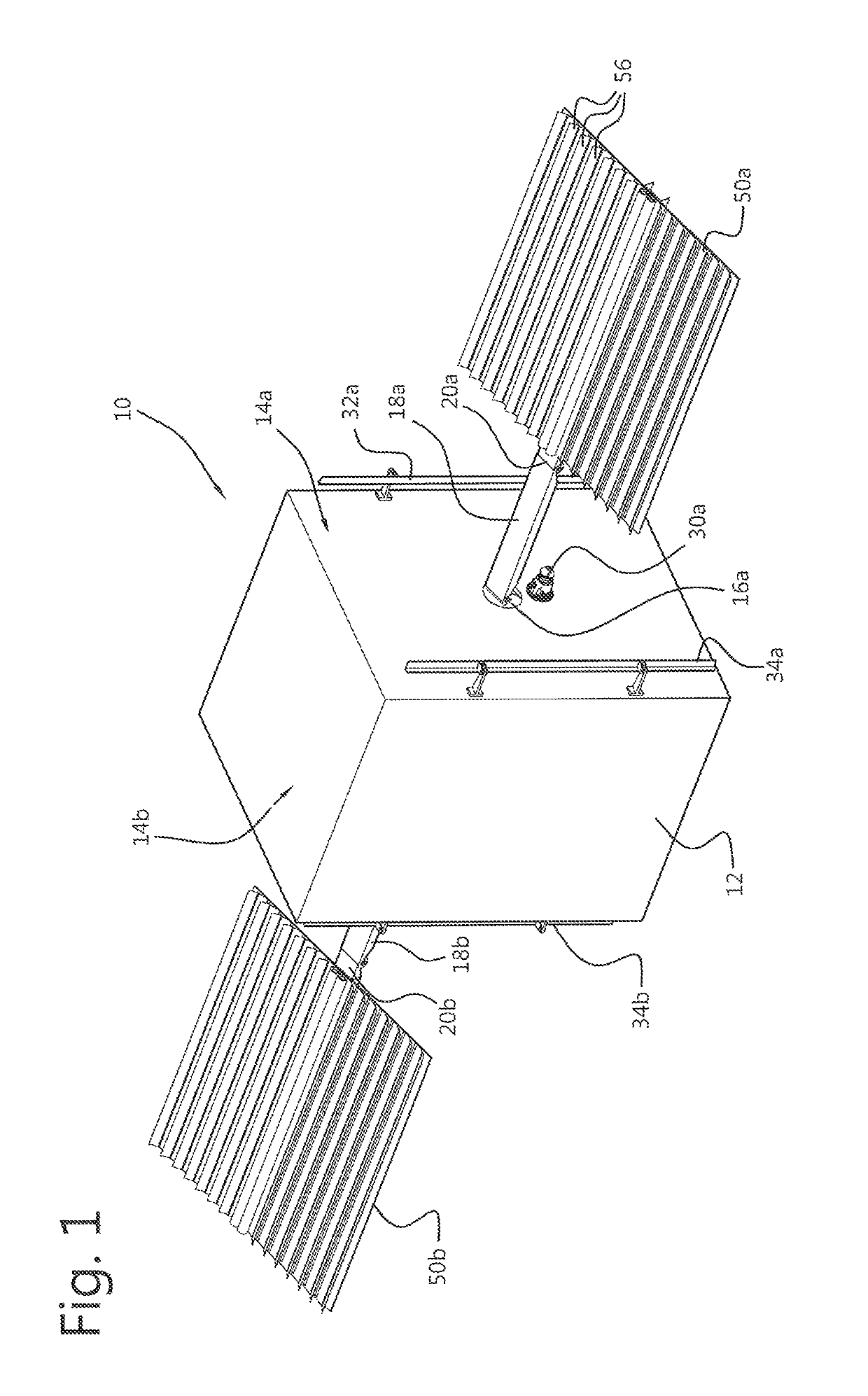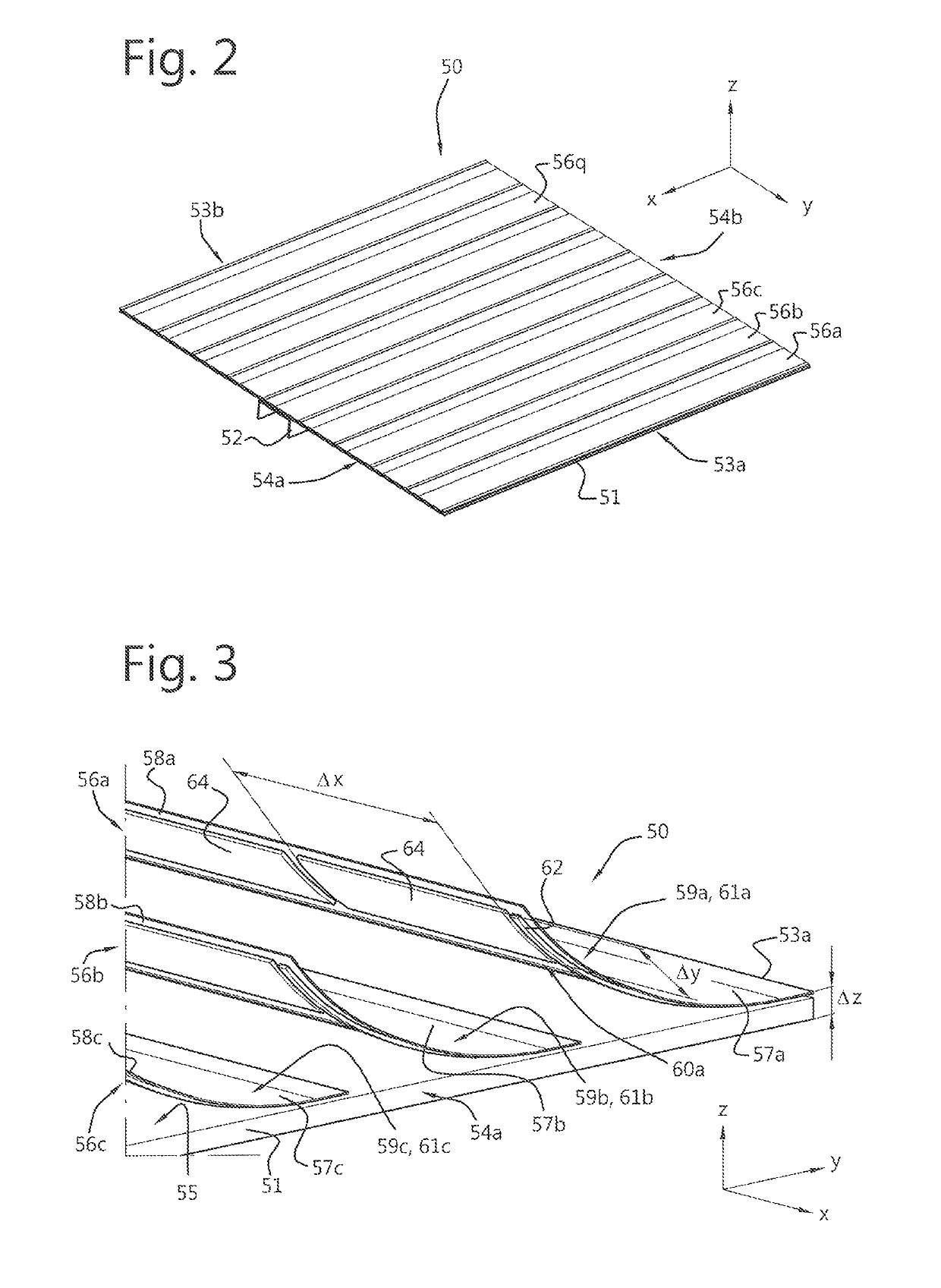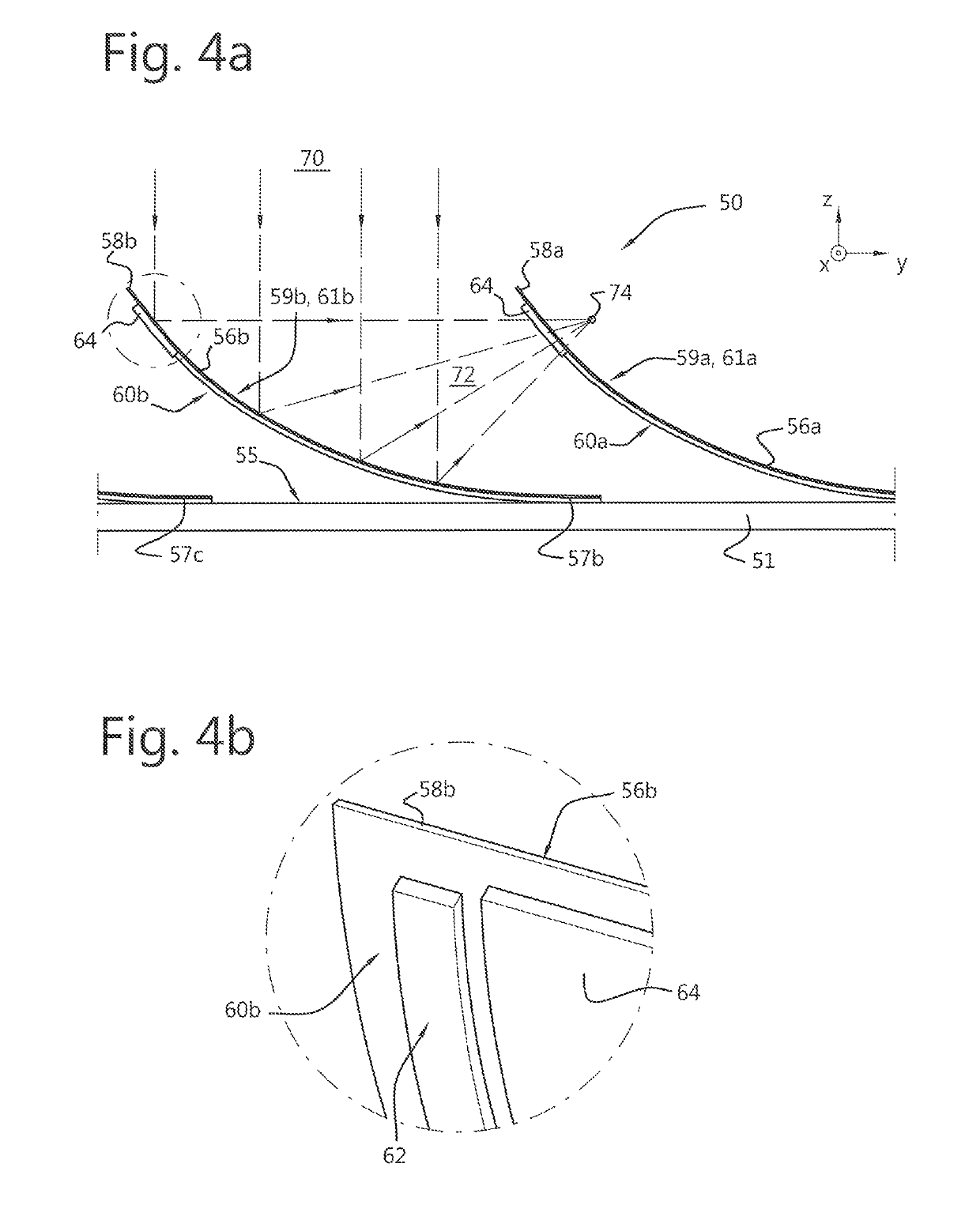Solar panel with flexible optical elements
a technology of flexible optical elements and solar panels, which is applied in the safety of solar heat collectors, photovoltaics, cosmonautic components, etc., can solve the problems of not disclosing the mechanism for storing or deploying the described concentrator cell array, and the coupling method of multiple solar panels, so as to increase the stiffness of the solar array, increase the resonance frequency, and increase the effect of rigidity
- Summary
- Abstract
- Description
- Claims
- Application Information
AI Technical Summary
Benefits of technology
Problems solved by technology
Method used
Image
Examples
Embodiment Construction
[0055]The following is a description of certain embodiments of the invention, given by way of example only and with reference to the figures.
[0056]It should be understood that the directional definitions and preferred orientations presented herein merely serve to elucidate geometrical relations for specific embodiments. The concepts of the invention discussed herein are not limited to these directional definitions and preferred orientations. Similarly, directional terms in the specification and claims, such as “front”, “back / rear”, “top,”“bottom,”“left,”“right,”“up,”“down,”“upper,”“lower,”“proximal,”“distal” and the like, are used herein solely to indicate relative directions and are not otherwise intended to limit the scope of the invention or claims.
[0057]FIG. 1 schematically shows a perspective view of an embodiment of a spacecraft 10 according to an embodiment. In this example, the spacecraft is formed as a satellite unit 10. The satellite unit 10 includes a body 12 and a solar ...
PUM
 Login to View More
Login to View More Abstract
Description
Claims
Application Information
 Login to View More
Login to View More - R&D
- Intellectual Property
- Life Sciences
- Materials
- Tech Scout
- Unparalleled Data Quality
- Higher Quality Content
- 60% Fewer Hallucinations
Browse by: Latest US Patents, China's latest patents, Technical Efficacy Thesaurus, Application Domain, Technology Topic, Popular Technical Reports.
© 2025 PatSnap. All rights reserved.Legal|Privacy policy|Modern Slavery Act Transparency Statement|Sitemap|About US| Contact US: help@patsnap.com



